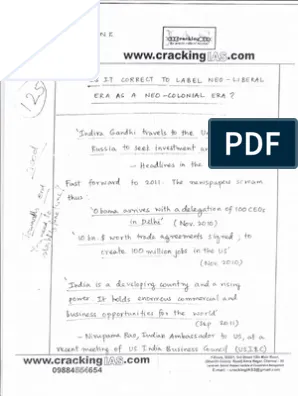- Home
- Prelims
- Mains
- Current Affairs
- Study Materials
- Test Series
Santhal (Hul) Rebellion
- The 19th century witnessed innumerable movements, but the ones like the Santhal revolt hold a significant position, in India’s struggle for freedom.
- The Santhal rebellion was a rebellion in present day Jharkhand, Eastern India against both the British East India Company (BEIC) and zamindari system by the Santhal.
Genesis
- In order to control the vast territory of India, East India Company began to implement revenue policies, law and order rules to be followed by the countrymen, from the time they began consolidating, after Battle of Plassey in 1757.
- In 1793, Lord Cornwallis introduced the Permanent Settlement in some parts of the country like Bengal, Bihar, and Orissa.
- Under the permanent revenue system, landlords had perpetual and hereditary rights over the land as long as they paid a fixed revenue to the British government. If the peasants were not able to pay their rent, the British auctioned away large tracts of land belonging to the Santhals, to anyone who would pay them fixed revenue and so in this process, several tribal lands were sold.
- In this process, the Santhal lost control over the land, and their old tribal systems and political structures that had continued for generations came to an end.
- The Santhals were the tribal people inhabiting the forest of Rajmahal hills. In 1832, East India Company demarcated the Damin-i-Koh from the region of Jharkhand and gave it to Santhals, to settle with a promise of non-interference in their land.
- But with changing times and the rising demand of the Britishers, the rent to the Santhals raised to an exorbitant rate.
- Ultimately, the Santhals were trapped in a situation where they had the only option to revolt against the Britishers and the Zamindars.
- Another reason cited for the Santhal rebellion was that the Santhals followed the barter system and they faced trouble paying the zamindars in cash, and as a result, they had to borrow money from the moneylenders at an exorbitant rate, which ultimately trapped them into a vicious cycle.
- To come out of this cycle and save the identity of the Santhals, the only solution was to revolt against the British policies.
The Rebellion
- The Santhal revolt (also known as the Hul revolt ) started on 30th June 1855, with the help of prominent leaders like Sidhu, Kanhu, Chand, and Bhairav, and also their two sisters Phulo and Jhano.
- The depressed and anguished Santhals engaged in guerrilla warfare against the Britishers and formed their own troops which included the farmers, villagers, and the women.
- In this quest, they were able to capture large parts of land including Rajmahal Hills, Bhagalpur district, and Birbhum.
- They militarized over 10000 Santhal people. The villagers put to fire the storehouses and the warehouses and all forms of communication lines were disrupted.
- The government applied all possible means to suppress the movement. In order to curb the rebellion, Britishers used heavy loaded weapons against bows and arrows used by the Santhals.
- The landlords were in the support of the government whereas the local people supported the Santhals in full vigour.
- Unfortunately, the duo brother Sidhu and Kanhu were arrested and the revolt had a brutal end.
- The Santhals were repressed and the movement came to an end in 1856.
How Was the revolt, different From the Other Revolts?
- Organized movement
- The Santhal uprising was an organized movement with good leadership qualities. In a short period of time, it was successful in uniting about 60,000 people.
- If we look at the other spontaneous movement of that time, we find that none of the movements was that well-arranged as the Santhal revolt. The unity of the Santhals shook the nerve of the Britishers.
- Use of weapons & Tactics
- Despite the Santhal using bows and arrows against the weapons and artillery used by the Britishers, the guerrilla tactics, which was a new occurrence for Bihar to fight against the Britishers, gave Santhals an upper hand.
- Trained leadership
- The prominent leaders of the war, Sidhu, and Kanhu in a short span of time, were successful in mobilizing a huge number of people to fight against the cause.
- Blow on British powers
- The Santhal rebellion was a blow on the British powers. It was such a fierce movement that Britishers had to implement martial law to quell the powers of Santhals
- Growth of Revolutionary Nationalism
- The Santhal revolt fostered a sense of unity among the Santhal tribes.
- It was seen as the beginning of larger wars to free the people from the oppressive British rule.
- This movement resulted in a feeling of nationalism which helped to mobilize people for further wars, like the Revolt of 1857.
- Identity of the tribal people
- The Santhal rebellion gave birth to the modern Santhal identity.
- It also promoted the tribal people to protect their culture and tradition from any kind of destruction and interference.
- Successful movement
- It was seen that the Britishers did acknowledge their follies, despite the Santhals being defeated
- Further, after the end of the war, the Santhal Paraganas Tenancy Act was enacted which provided the tribes some protection against the oppressive British Rule.
- This was successful in inculcating nationalist feelings among the people.
Thus, the Santhal uprising is not only a movement of great Historical importance. It rather, is the root cause behind it, the rights to tribal lands that finds mention, which becomes relevant in present context. Thus, History truly is a continuum and it is important to understand the past, to make sense of the present, in order to deal with current Tribal related issues in India.









 Latest News
Latest News
 General Studies
General Studies